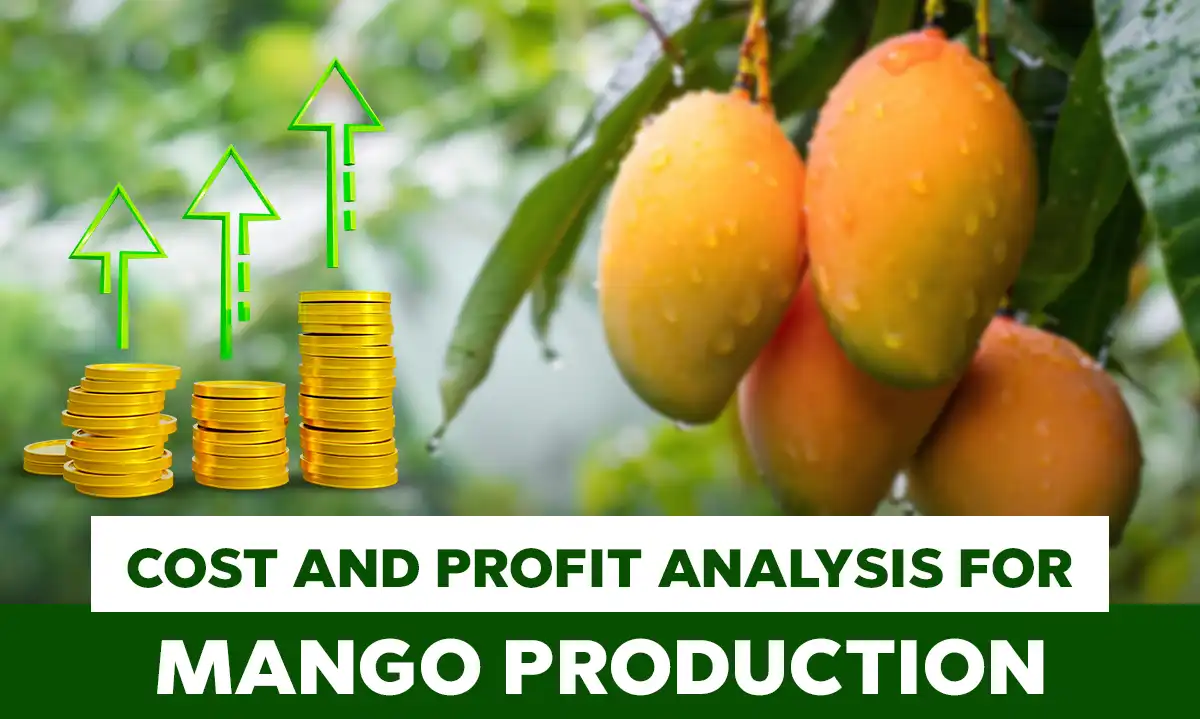Comprehensive Guide to Cost and Profit in Mango Production

Native to Southeast Asia, mango (Mangifera indica L.) flourish in many tropical and subtropical temperatures all around. Leading growers of this treasured fruit are India, Pakistan, the Philippines, Mexico, and Thailand. Mango farm land in the United States mostly in California, Puerto Rico, Hawaii, and Florida. After World War II, Florida's mango business struggled with marketing problems and quality concerns that kept it from realising its full potential even as efforts to grow it were undertaken.
Mangoes are produced mostly in Miami-Dade, Lee, and Palm Beach Counties in Florida. The 2017 agricultural census estimates that these regions have 2,656 acres set aside for mango farming. Depending on many variables including cultivar and cultural techniques, mature trees in Florida can produce between 220 and 330 pounds of fruit yearly. Grown mostly are "Tommy Atkins," "Keitt," "Palmer," "Van Dyke," and "Kent." Different mango varieties, which satisfy specialised fruit needs and niche markets, have drawn more attention recently. Florida's mango production might perhaps reach 58.8 million pounds yearly with an average planting density of 80 trees per acre, therefore translating to an estimated market value of $20.49 million. The growth in internet sales offers fresh chances for market expansion.
Cost Analysis of Mango Production
Examining the expenses of mango farming offers insightful information for both present and future growers. Key outlays are irrigation, fertilisation, pest control, labour, operating capital interest, fixed costs, harvesting and marketing. More specifically, fertilisation expenses come to $415 per acre annually while irrigation expenses run at $99 per acre. Covering fungicides, herbicides, and insecticides, pest management expenses come at roughly $200, $122, and $110 per acre accordingly. Operating capital's interest is roughly $67 per acre yearly; labour expenses are projected at $400 per acre. About $1,101 per acre are fixed expenses including insurance, land rent, and other overheads. Annual estimates for marketing and harvesting expenses come at $667 per acre.
Cost Breakdown
The cost breakdown of mango farm land output shows how different expenses related to farming the crop are distributed. With 42% of the total expenses going towards cultural costs which include basic operational aspects such labour, irrigation, fertilisation, and pest control they account for a sizable share. Since they directly affect the health and output of the mango trees, these expenses are vital. Thirty-five percent of the total expenses are fixed costs, that is, those involving insurance, land rent, overhead for machinery and other infrastructure.
Maintaining the operational capability of the orchard depends on these fixed expenses, which are incurred independent of fruit output volume. Twenty-one percent of the total expenses are related to marketing and harvesting costs, which pay for picking, packing, and selling the mangoes. These expenses are absolutely vital to guarantee that the mangoes reach the market in good condition and are correctly processed. The remaining 2% of the overall expenses are finally interest on capital, which stands for the cost of borrowing money or the opportunity cost of employing equity for running expenses. This little percentage captures the running expenses of the orchard as well as its financial investment needs.
Profitability Analysis of Mango Farming
Profitability-wise, growing and marketing mangoes on one acre runs an estimated yearly cost of $3,180, or roughly $0.17 per pound of mango. The gross income produced per acre comes to about $7,667 yearly given an average marketable yield of 18,700 pounds per acre and an F.O.B. (Free on Board) price of $0.41 per pound. With a gross margin of $5,587 per acre equivalent to $0.30 per pound this income level shows a good short-term profitability.
Including fixed costs, the net return per acre comes out to be $4,487 yearly or $0.24 per pound. Given other tropical fruit crops in the area, this net return shows a significant degree of profitability. Such profitability offers growers a good economic possibility since it implies that mango production is not only financially feasible but also maybe more profitable than many other crops in the area.
Sensitivity Analysis of Mango Farms in Farmland
A sensitivity study provides insightful examination of how variations in yield and price impact profitability. Under an ideal situation that is, where both mango yield and price climb by 10% the gross margin would rise dramatically from $5,587 to $7,176 an acre. This development shows the possibility of increased profitability when both important elements perform above expected. On the other hand, in a gloomy situation whereby the yield and price drop by 10%, the gross margin would drop to $4,147 per acre. This autumn emphasises how sensitive profit margins are to negative variations in pricing and yield.
Furthermore shown by the study is the more noticeable impact of yield fluctuations on gross margin than of price fluctuations. A 5% increase in yield, for instance, would result in a $383 rise in the gross margin; a 5% increase in price would enhance the gross margin by $374. This variation emphasises the more importance of yield enhancements on general profitability and implies that techniques meant to raise yield could have a more significant effect on financial results than corresponding price increases.
Conclusion
Finally, mango farm land output in southern Florida shows great profitability with an average net return of $4,487 per acre yearly. Prospective producers should exercise caution, though, since this study ignores the expenses of starting a new orchard including land purchase, development, and planting. Additionally well-known for alternative bearing and disease susceptibility such anthracnose are mangoes. Growers should think about replacing disease-resistant cultivars and implementing optimum management techniques if they want to keep profitable. Furthermore influencing general profitability are changes in the market and higher output; so, good planning and administration are rather important.
Latest blogs
JOIN OUR COMMUNITY !
Stay connected with Getfarms! Follow us on social media for the latest updates, exclusive offers, and a glimpse into the world of farmhouse living. Join our community today




























